1mg
Showing 2951–3000 of 3770 results
-

Guaiacol-Beta-D-glucopyranoside
$144.04 Add to cart View Product DetailsMolecular Formula : C13H18O7
-

Guaiacol-Beta-D-glucopyranoside-d3
$253.58 Add to cart View Product DetailsMolecular Formula : C13H15D3O7
-
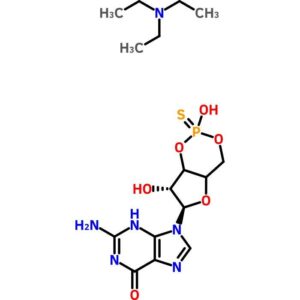
Guanosine-3′,5′-cyclic-monophosphothioate Sp-Isomer Sodium Salt
$668.41 Add to cart View Product DetailsGuanosine-3′,5′-cyclic-monophosphothioate Sp-Isomer Sodium Salt
-
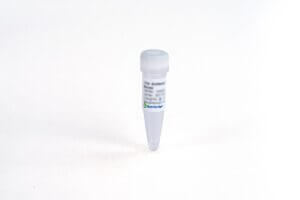
h-FABP (27C1C), mAb, Mouse
$137.14 Add to cart View Product DetailsHeart-type fatty acid binding protein (H-FABP) is encoded by the FABP3 gene with a low molecular weight of 15 kDa. It is released in large quantities into blood at an early stage of acute myocardial infarction (AMI). H-FABP is a serum marker with high sensitivity and specificity for diagnosing AMI and myocardial ischemia.
-

h-FABP (28D1E), mAb, Mouse
$137.14 Add to cart View Product DetailsHeart-type fatty acid binding protein (H-FABP) is encoded by the FABP3 gene with a low molecular weight of 15 kDa. It is released in large quantities into blood at an early stage of acute myocardial infarction (AMI). H-FABP is a serum marker with high sensitivity and specificity for diagnosing AMI and myocardial ischemia.
-

h-FABP (HC29)
$137.14 Add to cart View Product DetailsHeart-type fatty acid binding protein (H-FABP) is encoded by the FABP3 gene with a low molecular weight of 15 kDa. It is released in large quantities into blood at an early stage of acute myocardial infarction (AMI). H-FABP is a serum marker with high sensitivity and specificity for diagnosing AMI and myocardial ischemia.
-
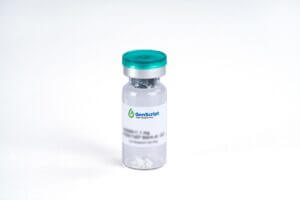
HB-EGF, Human
$1,030.69 Add to cart View Product DetailsProheparin-binding EGF-like growth factor (HB-EGF), also known as DTR, DTS and HEGFL, is a member of the EGF family of mitogens. It is expressed in macrophages, monocytes, endothelial cells and muscle cells. HB-EGF signals through the EGF receptor to stimulate the proliferation of smooth muscle cells, epithelial cells and keratinocytes. Compared to EGF, HB-EGF binds to the EGF receptor with a higher affinity and has been shown to bemore mitogenic, likely due to its ability to bind to heparin and heparin sulfate proteoglycans. HB-EGF has also been reported to act as a diphtheria toxin receptor, mediating endocytosis of the bound toxin. Heparin-binding EGF-like growth factor has been shown to interact with NRD1, Zinc finger and BTB domain-containing protein 16 and BAG1.
-

HB-EGF, Human
$737.44 Add to cart View Product DetailsProheparin-binding EGF-like growth factor (HB-EGF), also known as DTR, DTS and HEGFL, is a member of the EGF family of mitogens. It is expressed in macrophages, monocytes, endothelial cells and muscle cells. HB-EGF signals through the EGF receptor to stimulate the proliferation of smooth muscle cells, epithelial cells and keratinocytes. Compared to EGF, HB-EGF binds to the EGF receptor with a higher affinity and has been shown to bemore mitogenic, likely due to its ability to bind to heparin and heparin sulfate proteoglycans. HB-EGF has also been reported to act as a diphtheria toxin receptor, mediating endocytosis of the bound toxin. Heparin-binding EGF-like growth factor has been shown to interact with NRD1, Zinc finger and BTB domain-containing protein 16 and BAG1.
-

HB-EGF, Human
$737.44 Add to cart View Product DetailsProheparin-binding EGF-like growth factor (HB-EGF), also known as DTR, DTS and HEGFL, is a member of the EGF family of mitogens. It is expressed in macrophages, monocytes, endothelial cells and muscle cells. HB-EGF signals through the EGF receptor to stimulate the proliferation of smooth muscle cells, epithelial cells and keratinocytes. Compared to EGF, HB-EGF binds to the EGF receptor with a higher affinity and has been shown to bemore mitogenic, likely due to its ability to bind to heparin and heparin sulfate proteoglycans. HB-EGF has also been reported to act as a diphtheria toxin receptor, mediating endocytosis of the bound toxin. Heparin-binding EGF-like growth factor has been shown to interact with NRD1, Zinc finger and BTB domain-containing protein 16 and BAG1.
-

HB-EGF, Mouse
$1,035.00 Add to cart View Product DetailsHeparin-binding EGF-like growth factor (HB-EGF) is a member of the EGF family of proteins. HB-EGF-like growth factor is synthesized as a membrane-anchored mitogenic and chemotactic glycoprotein. An epidermal growth factor produced by monocytes and macrophages, due to an affinity for heparin is termed HB-EGF. It has been shown to play a role in wound healing, cardiac hypertrophy and heart development and function. The transmembrane form of HB-EGF is the unique receptor for diptheria toxin and functions in juxtacrine signaling in cells. Both forms of HB-EGF participate in normal physiological processes and in pathological processes including tumor progression and metastasis, organ hyperplasia, and atherosclerotic disease. HB-EGF can bind two locations on cell surfaces, heparan sulfate proteoglycans and EGF-receptor effecting cell to cell interactions.
-

HbA1c (4G1), mAb, Mouse
$78.49 Add to cart View Product DetailsGlycated hemoglobin (HbA1c) is formed by hemoglobin’s exposure to plasma glucose in a non-enzymatic process. As the average amount of plasma glucose increases, the fraction of HbA1c scales up. HbA1c reflects average plasma glucose over the previous eight to twelve weeks and it can be used as a marker to measure long-term blood glucose levels. HbA1c test is routinely performed in people with type 1 and type 2 diabetes to evaluate how well diabetes is controlled. The normal range for HbA1c level is less than 6%.
-

HCG (46H8), mAb, Mouse
$215.63 Add to cart View Product DetailsHuman chorionic gonadotropin (HCG) is a polypeptide hormone produced by the human placenta. HCG is a heterodimer, composed of an alpha and a beta subunit. The level of HCG is elevated in the serum of pregnant women. It is a useful marker for diagnosis of pregnancy.
-

HCG (5A8), mAb, Mouse
$73.87 Add to cart View Product DetailsHuman chorionic gonadotropin (HCG) is a polypeptide hormone produced by the human placenta. HCG is a heterodimer, composed of an alpha and a beta subunit. The level of HCG is elevated in the serum of pregnant women. It is a useful marker for diagnosis of pregnancy.
-
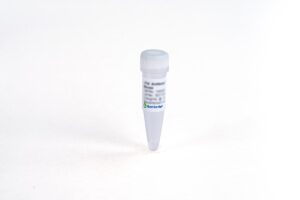
HCG (5B8), mAb, Mouse
$72.42 Add to cart View Product DetailsHuman chorionic gonadotropin (HCG) is a polypeptide hormone produced by the human placenta. HCG is a heterodimer, composed of an alpha and a beta subunit. The level of HCG is elevated in the serum of pregnant women. It is a useful marker for diagnosis of pregnancy.
-

HCV Antibody (29D), mAb, Mouse
$398.48 Add to cart View Product DetailsHepatitis
C virus (HCV) is a one kind of single-stranded RNA virus. It can causes liver
damage. The HCV capsid is formed by polymerization of the HCV Core Antigen (HCV
Ag). It was reported that HCV Ag could be used to diagnose active HCV infection. -

HCV Antibody (45F4), human chimeric Antibody
$398.48 Add to cart View Product DetailsHepatitis
C virus (HCV) is a one kind of single-stranded RNA virus. It can causes liver
damage. The HCV capsid is formed by polymerization of the HCV Core Antigen (HCV
Ag). It was reported that HCV Ag could be used to diagnose active HCV infection. -

Heat Stable FGF-basic, Human
$2,173.50 Add to cart View Product DetailsHeat Stable FGF-basic, Human is a pleiotropic cytokine and one of the prototypic members of the heparin-binding FGF family. Like other FGF family members, FGF-basic has the β trefoil structure. In vivo, FGF-basic is produced by a variety of cells, including cardiomyocytes, fibroblasts, and vascular cells. FGF-basic regulates a variety of processes including cell proliferation, differentiation, survival, adhesion, motility, apoptosis, limb formation and wound healing. FGF-basic can be tumorigenic due to its role in angiogenesis and blood vessel remodeling. The angiogenic effects of FGF-basic can produce beneficial cardioprotection during acute heart injury.
-

Hemoglobin (3B2), mAb, Mouse
$131.10 Add to cart View Product DetailsGlycated hemoglobin (HbA1c) is formed by hemoglobin’s exposure to plasma glucose in a non-enzymatic process. As the average amount of plasma glucose increases, the fraction of HbA1c scales up. HbA1c reflects average plasma glucose over the previous eight to twelve weeks and it can be used as a marker to measure long-term blood glucose levels. HbA1c test is routinely performed in people with type 1 and type 2 diabetes to evaluate how well diabetes is controlled. The normal range for HbA1c level is less than 6%.
-

HGF, Human
$2,307.19 Add to cart View Product DetailsHepatocyte Growth Factor (HGF),also known as hepatopoietin-A and scatter factor, is a pleiotropic mitogen belonging to the peptidase S1 family (plasminogen subfamily). It is produced by mesenchymal cells and acts on epithelial cells, endothelial cells and haemopoietic progenitor cells. HGF binds to the proto-oncogenic c-Met receptor to activate a tyrosine kinase signaling cascade. It regulates cell growth, motility and morphogenesis, thus it plays a pivotal role in angiogenesis, tumorogenesis and tissue regeneration.
-

HIV-1 p24 Antibody (5A4), mAb, Mouse
$382.95 Add to cart View Product DetailsHuman immunodeficiency virus (HIV) belongs to Lentivirus that infects humans through attacking the body’s immune system. The virus can be divided into HIV type 1 (HIV-1) and HIV type 2 (HIV-2). HIV1 p24 (capsid) protein is critical in HIV-1 viral replication. HIV-1 p24 is a useful biomarker for diagnosing HIV infection.
-

HIV-1 p24 Antibody (M564), mAb, Mouse
$382.95 Add to cart View Product DetailsHuman immunodeficiency virus (HIV) belongs to Lentivirus that infects humans through attacking the body’s immune system. The virus can be divided into HIV type 1 (HIV-1) and HIV type 2 (HIV-2). HIV1 p24 (capsid) protein is critical in HIV-1 viral replication. HIV-1 p24 is a useful biomarker for diagnosing HIV infection.
-

HIV-1 p24 Antibody (P152), mAb, Mouse
$382.95 Add to cart View Product DetailsHuman immunodeficiency virus (HIV) belongs to Lentivirus that infects humans through attacking the body’s immune system. The virus can be divided into HIV type 1 (HIV-1) and HIV type 2 (HIV-2). HIV1 p24 (capsid) protein is critical in HIV-1 viral replication. HIV-1 p24 is a useful biomarker for diagnosing HIV infection.
-

HMGB1, His, Human
$1,901.81 Add to cart View Product DetailsHuman High-mobility group box 1 protein (HMGB1), previously known as HMG-1 or amphoterin, is a member of the high mobility group box family of non-histone chromosomal proteins. Human HMGB1 is expressed as a 30 kDa, 215 amino acid (aa) single chain polypeptide containing three domains: two N-terminal globular, 70 aa positively charged DNA-binding domains (HMG boxes A and B), and a negatively charged 30 aa C-terminal region that contains only Asp and Glu.4, 5 Residues 27 – 43 and 178 – 184 contain a NLS. Posttranslational modifications of the molecule have been reported, with acetylation occurring on as many as 17 lysine residues. HMGB1 is expressed at high levels in almost all cells. It was originally discovered as a nuclear protein that could bend DNA. Such bending stabilizes nucleosome formation and regulates the expression of select genes upon recruitment by DNA binding proteins.
-
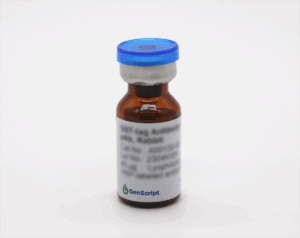
HRP-Protein A
$50.89 Add to cart View Product DetailsStaphylococcal Protein A binds strongly and specifically to the Fc region of immunoglobulin molecules, especially IgG of many species such as Human, Rabbit, Pig, etc. The product contains five high affinity binding sites that are capable of interacting with the Fc region of IgG. HRP-Protein A is produced by covalently linking HRP to Protein A, which can be used in immuno-detection such as immunoblotting (Western or Dot blot), ELISA, and immunohistochemistry.
-

HRP-Protein G
$69.86 Add to cart View Product DetailsProtein G, a cell surface protein of Group G streptococci, is a Type III Fc receptor that binds to the Fc region of IgG by a non-immune mechanism similar to that of protein A. It contains 3 IgG binding domains and is engineered to delete albumin-binding region. HRP has been covalently coupled to Protein G to produce the HRP-Protein G, which can be used in detection systems such as immunoblotting, ELISA, immunoperoxidase electron microscopy and immunohistochemistry.
-

HRP-Protein L
$87.11 Add to cart View Product DetailsProtein L is a cell surface protein expressed by Peptostreptoccocus magnus, that binds to the variable light chains (kappa chains) of immunoglobulins without interfering with antigen binding. In contrast to IgG-binding proteins such as protein A and protein G, protein L can be used for the detection and purification of mammalian kappa light chain antibodies of all classes. HRP-Protein L is produced by covalently linking HRP to protein L. The complex can be used in immuno-detection such as immunoblotting (western or dot blot), ELISA, and immunohistochemistry.
-

hsCRP (11C2), mAb, Mouse
$38.81 Add to cart View Product DetailsC-reactive protein (CRP) is synthesized in the liver by macrophage. Its level in blood increases when inflammation occurs. CRP serves as a useful marker for diagnosis of inflammation. High-sensitivity C-reactive protein (hsCRP), can serve as a risk marker for the diagnosis of myocardial infarction, ischemic stroke, peripheral vascular disease. Measuring hsCRP in blood is helpful to provide positive treatment of the disease.
-

hsCRP (12D6), mAb, Mouse
$38.81 Add to cart View Product DetailsC-reactive protein (CRP) is synthesized in the liver by macrophage. Its level in blood increases when inflammation occurs. CRP serves as a useful marker for diagnosis of inflammation. High-sensitivity C-reactive protein (hsCRP), can serve as a risk marker for the diagnosis of myocardial infarction, ischemic stroke, peripheral vascular disease. Measuring hsCRP in blood is helpful to provide positive treatment of the disease.
-

Human IgE (RC13), mAb, Mouse
$100.05 Add to cart View Product DetailsIgE is a type of immunoglobulins produced by the immune system. It is composed of two heavy chains and two light chains, like Ig molecules. IgE plays an essential role in various allergic reactions. Its main function is immunity to parasites such as Schistosoma mansoni, Trichinella spiralis, and Fasciola hepatica. It also plays an important role in type I hypersensitivity. Total IgE is considered as a significant marker of allergic state.
-

Human IgE (RC7H), mAb, Mouse
$100.05 Add to cart View Product DetailsIgE is a type of immunoglobulins produced by the immune system. It is composed of two heavy chains and two light chains, like Ig molecules. IgE plays an essential role in various allergic reactions. Its main function is immunity to parasites such as Schistosoma mansoni, Trichinella spiralis, and Fasciola hepatica. It also plays an important role in type I hypersensitivity. Total IgE is considered as a significant marker of allergic state.
-

Human Kappa Light Chain (2F1C1), mAb, Mouse
$326.89 Add to cart View Product DetailsImmunoglobulins (Ig) and free light chains (FLC) is involved in humoral immune response. Ig is composed of two identical light chains and two identical heavy chains. FLC contains two types: kappa free light chain (KFLC) and lambda free light chain (LFLC). The expression of Kappa or Lambda is greatly increased in multiple myeloma or other B cell malignancies. It is useful for the identification of certain non-Hodgkin’s lymphomas, leukemias and plasmacytomas. Immunohistochemistry is commonly applied for the detection of free light chains.
-

Human Lambda Light Chain (2D54), mAb, Mouse
$326.89 Add to cart View Product DetailsImmunoglobulins (Ig) and free light chains (FLC) is involved in humoral immune response. Ig is composed of two identical light chains and two identical heavy chains. FLC contains two types: kappa free light chain (KFLC) and lambda free light chain (LFLC). The expression of Kappa or Lambda is greatly increased in multiple myeloma or other B cell malignancies. It is useful for the identification of certain non-Hodgkin’s lymphomas, leukemias and plasmacytomas. Immunohistochemistry is commonly applied for the detection of free light chains.
-

HVEM-Fc, Human
$439.88 Add to cart View Product DetailsHerpes Virus Entry Mediator (HVEM) is a transmembrane protein that is the receptor for TNFSF14 (also known as LIGHT) and is therefore referred to asTNFRSF14. HVEM is expressed broadly on immune cells such as T cells, natural killer (NK) cells and monocytes. The interaction of 3 molecules of LIGHT with three molecules of HVEM forms a hexameric complex that leads to the recruitment and retention of effector cells and activates NK cells to produce large amounts of IFN-γ and GM-CSF. In addition to the canonical binding partner LIGHT, HVEM can also bind to the inhibitory signaling protein, B- and T- lymphocyte attenuator (BTLA), which suppresses immune responses. Therefore, the HVEM network plays an important role in regulating immunity and the behavior of lymphocytes.
-
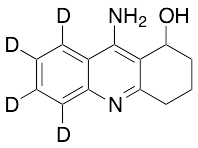
Hydroxy Tacrine-d4
$129.38 Add to cart View Product DetailsMolecular Formula : C13 D4 H10 N2 O
-
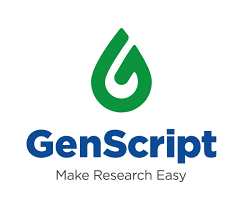
iFluor488-Protein L
$174.23 Add to cart View Product DetailsProtein L is a cell surface protein from Peptostreptoccocus magnus that binds to the variable light chains (kappa chain) of immunoglobulins without interfering with antigen binding. In contrast to IgG-binding proteins, such as protein A and protein G, which bind to the Fc region of immunoglobulins, protein L can be used for the detection and purification of mammalian kappa light chain antibodies of all classes. Since no part of the heavy chain is involved in the binding interaction, Protein L binds a wider range of antibody classes than Protein A or G. Protein L binds to representatives of all antibody classes, including IgG, IgM, IgA, IgE and IgD. Single chain variable fragments (scFv) and Fab fragments also bind to Protein L.
-

iFluor647-Protein L
$174.23 Add to cart View Product DetailsProtein L is a cell surface protein from Peptostreptoccocus magnus that binds to the variable light chains (kappa chain) of immunoglobulins without interfering with antigen binding. In contrast to IgG-binding proteins, such as protein A and protein G, which bind to the Fc region of immunoglobulins, protein L can be used for the detection and purification of mammalian kappa light chain antibodies of all classes. Since no part of the heavy chain is involved in the binding interaction, Protein L binds a wider range of antibody classes than Protein A or G. Protein L binds to representatives of all antibody classes, including IgG, IgM, IgA, IgE and IgD. Single chain variable fragments (scFv) and Fab fragments also bind to Protein L.
-

IFN-α 2a, Human
$405.38 Add to cart View Product DetailsInterferon-Alpha 2a (IFN-Alpha 2a), Human produced by leukocytes is a member of Interferon family. IFN-alpha is mainly involved in innate immune response against a broad range of viral infections. IFN-alpha 2 has three acid stable forms (a,b,c) signaling through IFNAR2. IFN-alpha 2a shares 99.4% , 98.8% aa sequence identity with IFN-alpha 2b and 2c respectively. IFN-alpha contains four highly conserved cysteine residues which form two disulfide bonds, one of which is necessary for biological activity.
-

IFN-α 2b, Human
$931.50 Add to cart View Product DetailsInterferon-Alpha 2b (IFN-Alpha 2b) produced by leukocytes is a member of Interferon family. IFN-alpha is mainly involved in innate immune response against a broad range of viral infections. IFN-alpha 2 has three acid stable forms (a,b,c) signaling through IFNAR2. IFN-alpha 2b shares 99.4% aa sequence identity with both IFN-alpha 2a and 2c. IFN-alpha contains four highly conserved cysteine residues which form two disulfide bonds, one of which is necessary for biological activity.
-

IFN-γ, Human
$487.31 Add to cart View Product DetailsHuman Interferon gamma (hIFN-γ) is amacrophage‐activating factor and the lone member of Interferon type II.The active form of IFN-γ is an antiparallel dimer that interacts with the receptor IFN-γR1 and sets off IFN-γ/JAK/STAT pathway. IFN-γ signaling does diverse biological functions primarily related to host defense and immune regulation, including antiviral and antibacterial defense, apoptosis, inflammation, and innate and acquired immunity. While IFN-γ–induced inflammatory cascade summons a variety of immune‐related cell types, such as macrophages, natural killer (NK) cells and cytotoxic T lymphocytes (CTLs), IFN-γ is also implicated in resistance to NK cell and CTL responses and in immune escape in a variety of cancers.
-

IFN-γ, Human(CHO-expressed)
$521.81 Add to cart View Product DetailsHuman Interferon gamma (hIFN-γ) is amacrophage-activating factor and the lone member of Interferon type II. The active form of IFN-γ is an antiparallel dimer that interacts with the receptor IFN-γR1 and sets off IFN-γ/JAK/STAT pathway. IFN-γ signaling does diverse biological functions primarily related to host defense and immune regulation, including antiviral and antibacterial defense, apoptosis, inflammation, and innate and acquired immunity. While IFN-γ–induced inflammatory cascade summons a variety of immune-related cell types, such as macrophages, natural killer (NK) cells and cytotoxic T lymphocytes (CTLs), IFN-γ is also implicated in resistance to NK cell and CTL responses and in immune escape in a variety of cancers.
-

IFN-γ, Mouse
$414.00 Add to cart View Product DetailsSharing 41% sequence identity with human Interferon gamma (hIFN–γ), mouse IFN gamma (mIFN–γ)is a macrophage-activating factor.The active form of IFN–γ is an antiparallel dimer that sets off IFN–γ/JAK/STAT pathway. IFN–γ signaling does diverse biological functions primarily related to host defense and immune regulation, including antiviral and antibacterial defense, apoptosis, inflammation, and innate and acquired immunity.While IFN–γ–induced inflammatory cascade summons a variety of immune-related cell types, such as macrophages, natural killer (NK) cells and cytotoxic T lymphocytes (CTLs), IFN–γ is also implicated in resistance to NK cell and CTL responses and in immune escape in avariety of cancers.
-

IFN-γ, Rat
$836.63 Add to cart View Product DetailsInterferon-gamma (IFN-γ), also known as Type II interferon or immune interferon, is a cytokine produced primarily by T-lymphocytes and natural killer cells. The protein shares no significant homology with IFN-β or the various IFN-α family proteins. Mature IFN-γ exists as noncovalently-linked homodimers. It shares high sequence indentity with mouse IFN-γ (86 %). IFN-γ was originally characterized based on its antiviral activities. The protein also exerts antiproliferative, immunoregulatory and proinflammatory activities and is thus important in host defense mechanisms. IFN-γ induces the production of cytokines, upregulates the expression of class I and II MHC antigens, Fc receptor and leukocyte adhesion molecules. It modulates macrophage effector functions, influences isotype switching and potentiates the secretion of immunoglobulins by B cells. Additionally, IFN-γ augments TH1 cell expansion and may be required for TH1 cell differentiation.
-

IFN-γ, Rat (CHO-expressed)
$521.81 Add to cart View Product DetailsInterferon-γ (IFN-γ), also known as Type II interferon or immune interferon, is a cytokine produced primarily by T-lymphocytes and natural killer cells. The active form of IFN-γ is an antiparallel dimer that interacts with the receptor IFN-γR1 and sets off IFN-γ/JAK/STAT pathway. IFN-γ signaling does diverse biological functions primarily related to host defense and immune regulation, including antiviral and antibacterial defense, apoptosis, inflammation, and innate and acquired immunity. While IFN-γ–induced inflammatory cascade summons a variety of immune-related cell types, such as macrophages, natural killer (NK) cells and cytotoxic T lymphocytes (CTLs), IFN-γ is also implicated in resistance to NK cell and CTL responses and in immune escape in a variety of cancers.
-

IFN-λ1, Human
$2,018.25 Add to cart View Product DetailsIL-28A, IL-28B, and IL-29, also named interferon-λ2 (IFN-λ2), IFN-λ3, and IFN-λ1, respectively, are newly identified class II cytokine receptor ligands that are distantly related to members of the IL-10 family (11-13% aa sequence identity) and the type I IFN family (15-19% aa sequence identity). The expression of IL-28A, B, and IL-29 is induced by virus infection or double-stranded RNA. All three cytokines exert bioactivities that overlap those of type I IFNs, including antiviral activity and up-regulation of MHC class I antigen expression. The three proteins signal through the same heterodimeric receptor complex that is composed of the IL-10 receptor β (IL-10 Rβ) and a novel IL-28 receptor α (IL-28 Rα, also known as IFN-λR1). Ligand binding to the receptor complex induces Jak kinase activation and STAT1 and STAT2 tyrosine phosphorylation.
-

IGF-BP-2, His, Human
$1,863.00 Add to cart View Product DetailsIGF-BP-2, also known as Insulin-like growth factor-binding protein 2, IBP-2 and BP-2, is a cysteine-rich secreted protein belonging to the IGF-binding protein superfamily. It is expressed by the central nervous system, bone cells and reproductive tissues. IGF-BP-2 binds to both IGF-I and IGF-II, with a much higher binding affinity to IGF-II than IGF-I. IGF-BP-2 has been shown to inhibitand stimulate the growth promoting effects of IGFs, thus serving as a regulator for IGF distribution, function and activity.
-

IGF-BP-3, Human
$2,018.25 Add to cart View Product DetailsIGF-BP3 is a 30 kDa cysteine-rich secreted protein. It is the major IGF binding protein present in the plasma of human and animals and it is also found in α-granules of platelets. In addition to its ability to modulate the activity of IGF-I and IGF-II, IGF-BP3 exerts inhibitory effects on follicle stimulating hormone (FSH) activity. Decreased plasma levels of IGF-BP3 often results in dwarfism, whereas elevated levels of IGF-BP3 may lead to acromegaly. The expression of IGF-BP3 in fibroblasts is stimulated by mitogenic growth factors such as Bombesin, Vasopressin, PDGF, and EGF.
-

IGF-BP-4, His, Human
$1,863.00 Add to cart View Product DetailsInsulin-like growth factor-binding protein 4 (IGF-BP-4), also known as IBP-4, is a secreted glycoprotein belonging to the IGFBP family. IGF-BP-4 is produced by osteoblasts, epidermis, ovarian follicles and other tissues. It binds both insulin-like growth factor (IGF) I and II, and it circulates in the plasma in both glycosylated and non-glycosylated forms. IGF-BP-4 prolongs the half-life of the IGFs and has been shown to inhibit or stimulate the growth-promoting effects of the IGFs. Pregnancy Associated Plasma Protein A (PAPP-A) proteolytically cleaves IGF-BP-4 and reduces its affinity to bind IGFs, and thus serves as an important regulator of IGF-BP-4 function.
-

IGF-I, Bovine
$120.75 Add to cart View Product DetailsInsulin-like growth factor 1 (IGF-1), also called Somatomedin, is a hormone similar in molecular structure to insulin but has a much higher growth-promoting activity. IGF-1 consists of 70 amino acids in a single chain with three intramolecular disulfide bridges. IGF-1 may be a physiological regulator of [1-14C]-2-deoxy-D-glucose (2DG) transport and glycogen synthesis in osteoblasts. It is able to stimulate glucose transport in bone-derived osteoblastic (PyMS) cells and is effective at much lower concentrations than insulin, not only regarding glycogen and DNA synthesis but also with regard to enhancing glucose uptake. It may also play a role in synapse maturation.
-
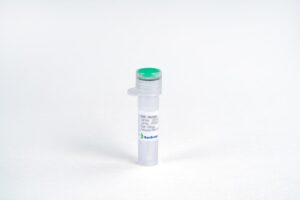
IGF-I, Human
$120.75 Add to cart View Product DetailsInsulin-like growth factor I (IGF-I) also known as Somatamedin C is a hormone similar in molecular structure to insulin. Human IGF-I has two isoforms (IGF-IA and IGF-IB) which are differentially expressed by various tissues. Mature human IGF-I shares 94% and 96% aa sequence identity with mouse and rat IGF-I, respectively. Both IGF-I and IGF-II (another ligand of IGF) can signal through the IGF-I receptor (IGFIR), but only IGF-II can bind the IGF-II receptor (IGFIIR/ Mannose-6-phosphate receptor). IGF-I plays an important role in childhood growth and continues to have anabolic effects in adults.
-

IGF-I, Mouse
$612.38 Add to cart View Product DetailsInsulin-like Growth Factor I (IGF-I) is a single chain 7 kDa growth-promoting polypeptide originally identified as somatomedin-c. It belongs to the IGF family of peptides, which also includes IGF-II and insulin. The gene expression of IGF-I is mainly regulated by Growth Hormone, and IGF-I executes its functions via signaling through transmembrane tyrosine receptors (IGF Receptors). Most circulating IFG-I is associated with the IGF Binding Protein 3 (IGFBP-3), and the IGFBPs may inhibit the actions of IGFs by competing against the IGF Receptors. IGF-I is active in post-natal and adult animals, and is crucial for somatic growth, as IGF-I null mice show marked retardation in utero. IGF-I is involved in carcinogenesis, and related to prostate cancer as well.






